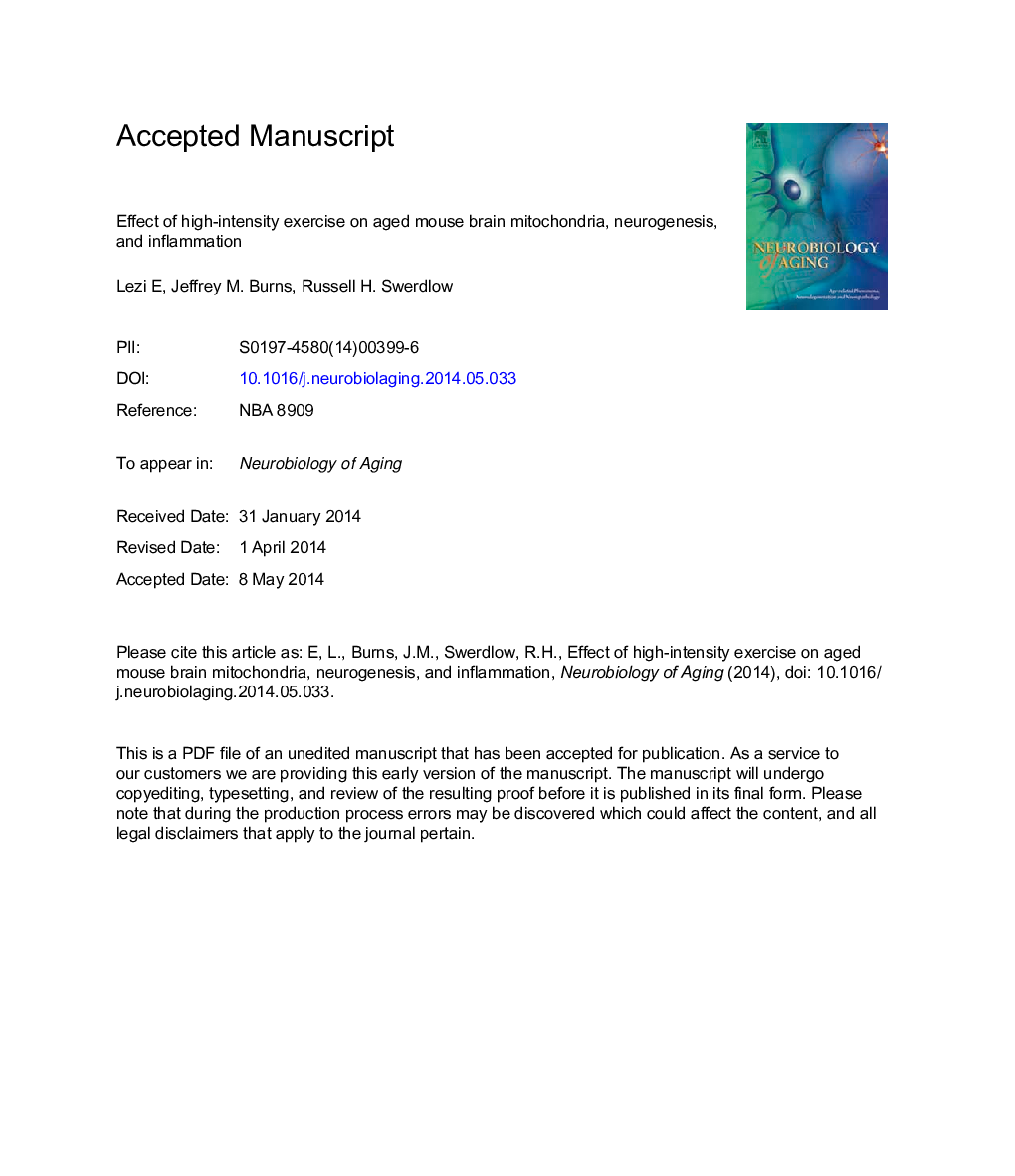| Article ID | Journal | Published Year | Pages | File Type |
|---|---|---|---|---|
| 6805441 | Neurobiology of Aging | 2014 | 36 Pages |
Abstract
In aged mice, we assessed how intensive exercise affects brain bioenergetics, inflammation, and neurogenesis-relevant parameters. After 8 weeks of a supra-lactate threshold treadmill exercise intervention, 21-month-old C57BL/6 mice showed increased brain peroxisome proliferator-activated receptor gamma coactivator-1α protein, mammalian target of rapamycin and phospho-mammalian target of rapamycin protein, citrate synthase messenger RNA, and mitochondrial DNA copy number. Hippocampal vascular endothelial growth factor A (VEGF-A) gene expression trended higher, and a positive correlation between VEGF-A and PRC messenger RNA levels was observed. Brain doublecortin, brain-derived neurotrophic factor, tumor necrosis factor-α, and CCL11 gene expression, as well as plasma CCL11 protein levels, were unchanged. Despite these apparent negative findings, a negative correlation between plasma CCL11 protein levels and hippocampal doublecortin gene expression was observed; further analysis indicated exercise may mitigate this relationship. Overall, our data suggest supra-lactate threshold exercise activates a partial mitochondrial biogenesis in aged mice, and a gene (VEGF-A) known to support neurogenesis. Our data are consistent with another study that found systemic inflammation in general, and CCL11 protein specifically, suppresses hippocampal neurogenesis. Our study supports the view that intense exercise above the lactate threshold may benefit the aging brain; future studies to address the extent to which exercise-generated lactate mediates the observed effects are warranted.
Related Topics
Life Sciences
Biochemistry, Genetics and Molecular Biology
Ageing
Authors
Lezi E, Jeffrey M. Burns, Russell H. Swerdlow,
